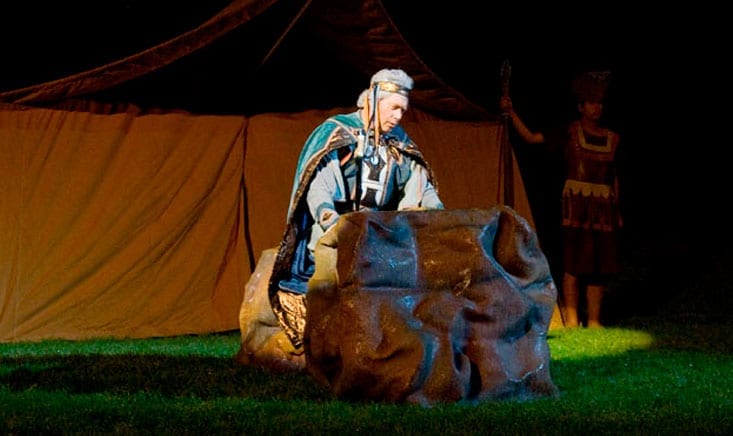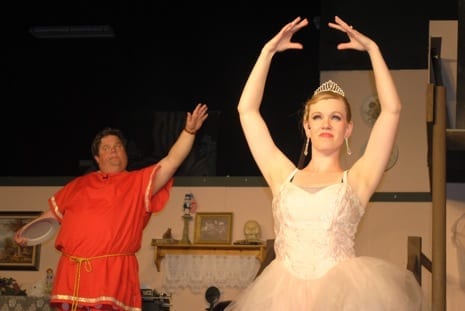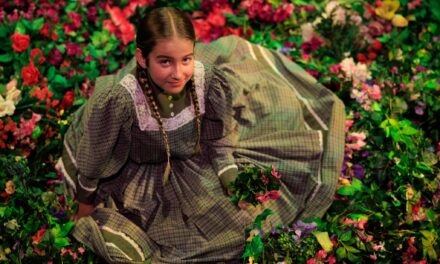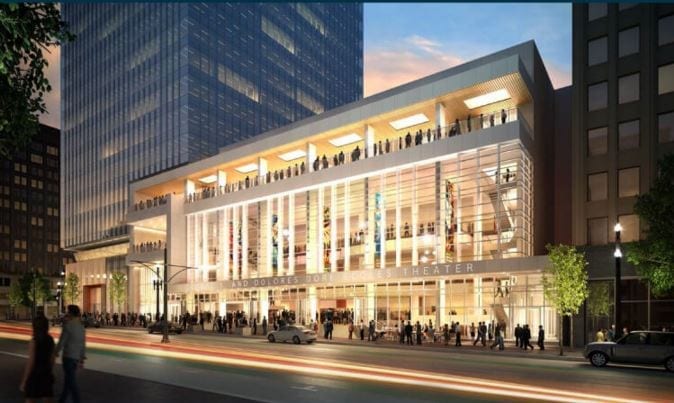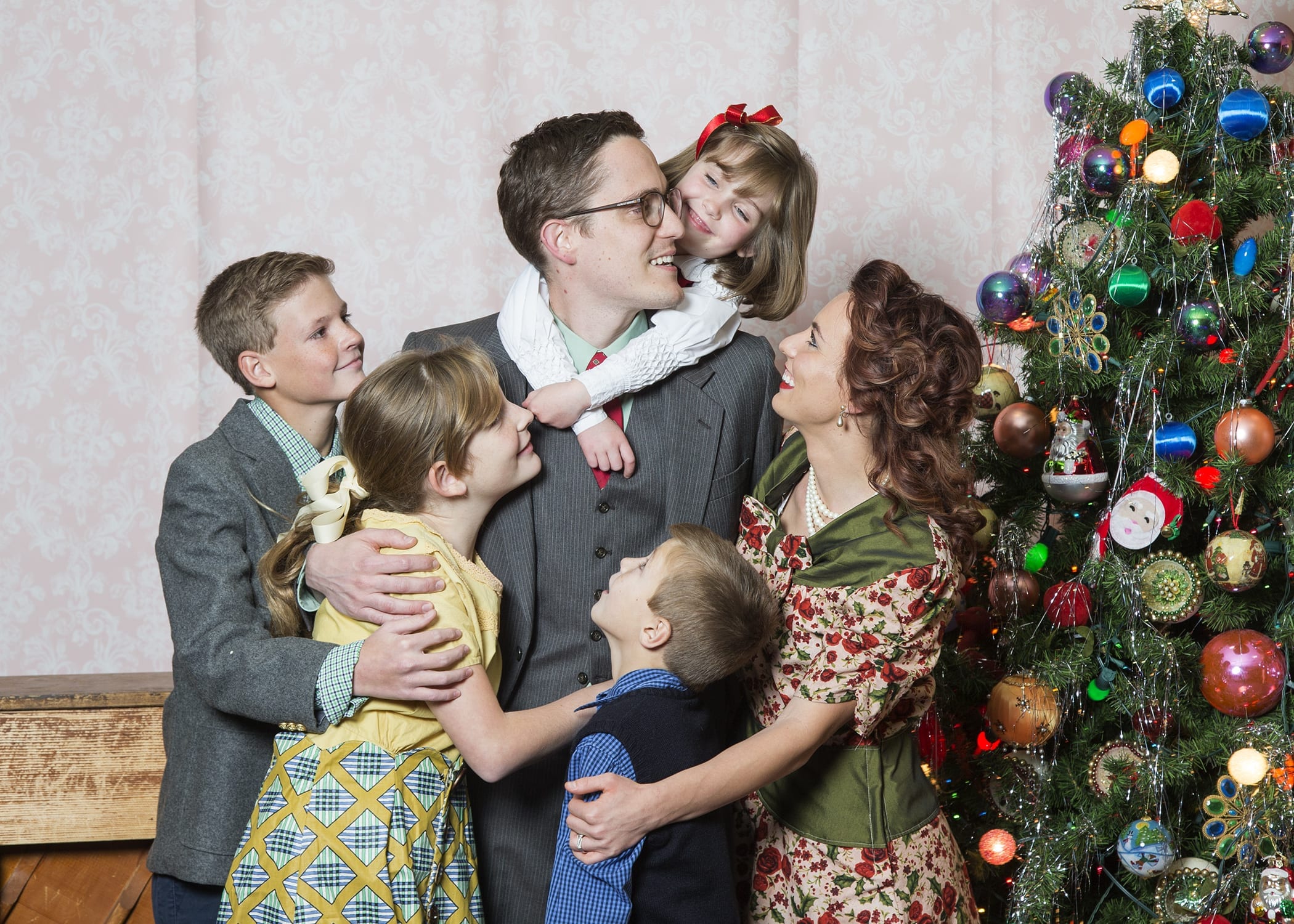MANTI — On Thursday night, I made a pilgrimage, of sorts, to the small, quaint town of Manti, Utah, to attend the Mormon Miracle Pageant. For many thousands of people (upwards of 80,000 each year) it is a pilgrimage, complete with the religious motivation for worship and fellowship. For me, a non-Mormon scholar of contemporary Mormon theatre, it was more of a theatrical pilgrimage to cross off my bucket list.
Ever since I attended the LDS Church pageant at Hill Cumorah in Palmyra, New York, I have wanted to see how the pageant at Manti compared. I was not disappointed. While the pageant at Hill Cumorah is larger in scale with more visual sensation, the Mormon Miracle Pageant seems more impressive in the performance experience. It is, in some ways, the ultimate expression of community theatre: a community united by locale, religion, and culture coming together for an epic, melodramatic expression of faith affirmation.
Manti is about a two hour drive from Salt Lake City, and once off the freeway, the one lane roads pass through sleepy little towns like Fountain Green and Moroni. (Take care not to speed. State troopers are called in to help patrol the roads.) As soon as you near Manti, “Pageant Special” signs appear in shops along the streets, an early indication of the manner in which the pageant really transforms these towns for the two weeks that the tourist/audiences descend upon them. In Manti, crowds gather early, and various community organizations put on traditional turkey dinners at the churches and advertise for breakfasts the morning after the pageant. One-half block from the temple are the food and vendor booths with LDS-themed t-shirts for sale alongside the cotton candy and Navajo tacos. At the temple itself, set high on hill with a large expanse of sky canvased behind it, there are thousands of chairs set up in front of the sloped space that serves as the stage. Members of the costumed cast, most of them youth, weave in and out of the chairs talking to the audience members in the hours prior to the show. This is a proselytizing opportunity, to be sure, but because I was sitting with locals, I realized it was also an opportunity for continued fellowship and part of the shared experience for the performers and audience members, many who know each other. Proselytizing also takes place outside of the performance-space gates by members of other Christian churches. While they may look like “protesters” of the pageant, they are called “street preachers.” There are a fair number of them, and they inhabit an entire intersection in their attempt to engage LDS members in discussions of faith and theology, despite warnings in the pageant program for visitors to avoid those “opportunities.”
 The drive to the pageant, the food and vendors, the street preachers, the costumed cast, and the Sanpete County sunset all deliver an important part of the performance experience before the show even begins. There is a sense of tradition and heritage, an indication that the pageant has been going and growing for over forty years in this small community. The aspect of pilgrimage is further cemented by youth from various LDS wards in the Salt Lake Valley, all wearing coordinating t-shirts that set them apart from the other groups. There seems, for them, a great sense of anticipation.
The drive to the pageant, the food and vendors, the street preachers, the costumed cast, and the Sanpete County sunset all deliver an important part of the performance experience before the show even begins. There is a sense of tradition and heritage, an indication that the pageant has been going and growing for over forty years in this small community. The aspect of pilgrimage is further cemented by youth from various LDS wards in the Salt Lake Valley, all wearing coordinating t-shirts that set them apart from the other groups. There seems, for them, a great sense of anticipation.
The show begins, of course, with a short introduction, a prayer (led on the night I attended by a member of the church’s Quorum of the Seventy), and the national anthem. When the lights come up on the pageant space, they are accompanied by the sounds of pre-recorded narration and music (a feature for which the pageant at Hill Cumorah is also known), and this continues throughout the production. With the script pre-recorded, the actors thus communicate the feeling and fervor of the show through their actions that are overstated and sweeping in an attempt to visually reach the many thousands in the audience. The monstrously large cast, which numbered over 900 this year, gives heart and soul to their performances, moving quickly to their marks and energetically transforming into religious revivalists, Nephites, Lamanites, pioneers, and angels. Their movements are simple enough. There is no grand choreography in the pageant, with the exception of the sixth scene depicting the eternal forces of good and evil among the Nephites and Lamanites in which dancers portray a human sacrifice and portray a family giving thanks for harvest. Director John Keeler has kept simplicity in the other scenes. Exaggerated arm motions are used by the actors to communicate joy, battle, sorrow, and worship in a way that provides illustration to the narration rather than provide insight into characterization.
 The narration, too, is sweeping and exaggerated in a theatrical, melodramatic way. Because the pageant tells the story of the Mormon Church, beginning with Joseph Smith, and looking back to the main events of the Book of Mormon before continuing with stories from the LDS migration, it really is epic in its scope. The narrators, male and female, use great emotion in the telling of the inspired story by the original writer Grace Johnson. (To be sure, the current pageant surely must be a mixture of old and new, with many parts rewritten or removed to suit the Church theologians.) The script is simple enough that non-Mormons would easily follow then narrative. It drags a bit in the middle when the various battles between the Nephites and Lamanites are told, but following the Christ’s visit to America—the obvious highlight of the show—it moves quickly through the migration story. Perhaps, the pacing becomes a little too fast to do justice to a saga worthy of a pageant in its own right, only hastily hitting on such topics as the Mormon Battalion and the hardship on the plains. Despite this, however, the importance of those events is communicated, and the final scenes have potential to be emotionally moving.
The narration, too, is sweeping and exaggerated in a theatrical, melodramatic way. Because the pageant tells the story of the Mormon Church, beginning with Joseph Smith, and looking back to the main events of the Book of Mormon before continuing with stories from the LDS migration, it really is epic in its scope. The narrators, male and female, use great emotion in the telling of the inspired story by the original writer Grace Johnson. (To be sure, the current pageant surely must be a mixture of old and new, with many parts rewritten or removed to suit the Church theologians.) The script is simple enough that non-Mormons would easily follow then narrative. It drags a bit in the middle when the various battles between the Nephites and Lamanites are told, but following the Christ’s visit to America—the obvious highlight of the show—it moves quickly through the migration story. Perhaps, the pacing becomes a little too fast to do justice to a saga worthy of a pageant in its own right, only hastily hitting on such topics as the Mormon Battalion and the hardship on the plains. Despite this, however, the importance of those events is communicated, and the final scenes have potential to be emotionally moving.
The incidental music of the pageant is also fraught with feeling, but perfectly suited to the ebb and flow of the production. It is never distracting. So, too, the few technical elements in the show are complementary, even if they do little to enhance the story (there are some pyrotechnics, but nothing overly impressive, and most other effects are done with lighting). The set design is similarly utilitarian, consisting of little more than a pyramid for the scenes in America, a small bunch of trees for the Sacred Grove, and a structure that serves as Joseph’s Smith’s house and Carthage Jail. The costume design, by Ivo Peterson, is well done, especially considering the magnitude of the task to dress a cast of such a large size in so many different time periods and that can serve as visual markers to a large audience sitting very far away. The audience, too, should be wary of their clothes. It got very cold the night I was there, and mosquitos are an issue every year, despite efforts of the pageant organizers to spray.
The Mormon Miracle Pageant certainly isn’t for everyone. It does not have the spectacle of a Broadway show or some of the other large outdoor pageants in this country, and the script is geared to those who profess faith in the LDS Church or those who might be interested. However, it is a worthy pilgrimage for Mormons and for those like me that are interested in the performance experience and how theatre can influence a culture and community in a very real way. Whether readers are Mormon or not, the Mormon Miracle Pageant is part of our Utah theatre heritage, involving more people in its short run that many community theatres do in an entire year. If nothing else, there’s the pretty drive and the turkey dinner.

